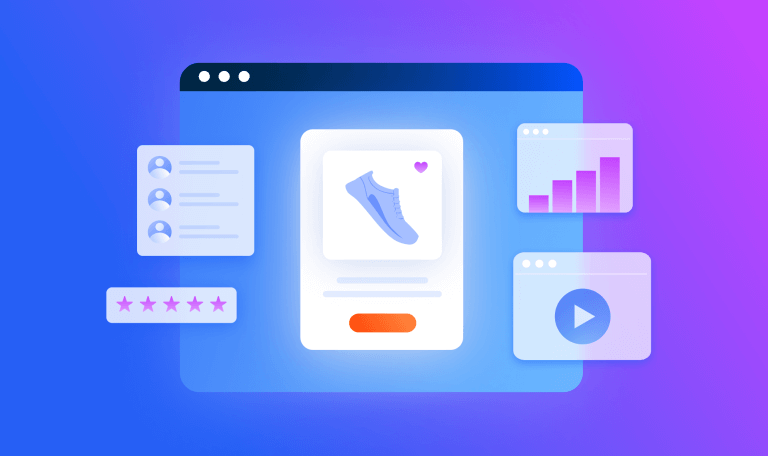How to Use Holiday Shopping Trends to Boost Year-round Strategy

Five days out of 365 may not seem like much. However, for eCommerce, the five days from Thanksgiving to Cyber Monday, or Cyber 5, is the prime holiday shopping season and can make or break the year. Using Similarweb Shopper Intelligence, we analyzed holiday shopping trends in 2021 and how they can be used to optimize retail and CPG strategies for the rest of the year – a true gift that keeps on giving.
1. Adjust to shifts in consumer demand
Holiday consumer trends indicate that shoppers prefer to buy cheaper items or gifts online and make more expensive purchases in-store.
- On target.com the average cost of Kitchen & Dining products during Cyber 5 fell 6% from last year, despite increased prices due to inflation and supply chain issues.
- In the furniture space, exclusively digital retailers (those that only sell their wares online) suffered large declines. Visits to wayfair.com and overstock.com dipped 27% and 43%, indicating that shoppers preferred onsite stores to test and buy comfy couches.
- In the consumer electronics category, revenue on amazon.com declined 20% year-over-year (YoY).
- Categories with small, low-cost items performed strongly. For instance, cart size for Amazon Beauty & Personal Care was the second-highest across the site during Cyber 5 vs. the 17-day lead-up, with three out of five top products in November under $20.
Takeaways
- Allocate resources to smaller, lower-cost products during prime shopping seasons and ensure inventory levels are high.
- Consider bundling complimentary, small products within low-cost, high-cart-size categories to create attractive gifts.
- Big-ticket online retailers may need to develop more sophisticated strategies to leverage holiday shopping trends and catch consumers’ attention so they don’t buy in-store.
- Big-ticket brands should focus on hybrid (those that sell online and in-store) over digital retailers in their distribution strategy.
2. Tailor strategy to purchase and browsing behavior
Despite Black Friday and Cyber Monday sales lowering from 2020, Americans spent nearly $110 billion from Nov. 1 through Cyber Monday, a 12% increase. Amazon’s daily average sales jumped 63% and revenue increased 85% over the 17-day lead-up, a 17 pts YoY rise. These gains indicate consumers are buying gifts earlier.
In fact, Amazon conversion rates dipped on Nov. 26, Black Friday, while product views skyrocketed, indicating more browsing over buying on the shopping holiday. Consumers likely cross-shopped other retailers and weren’t as easy to convince to make a purchase on the historic shopping day.
The YoY increase in product views across amazon.com in 2021 indicates that consumers are browsing products more actively earlier in the year.
Takeaways
- Promote and discount products for shopping holidays, including Amazon Prime Day and even President’s Day, earlier. This year, Amazon and Target promoted Black Friday in October.
- Consumers identify what they want prior to discounts, so consider Amazon SEO and other tactics to rank higher in search results so that your product is top-of-mind when consumers are ready to buy.
- Distribute products across marketplaces as more browsing indicates consumers are checking out other websites for the best deals.
3. Incorporate on-site search into the marketplace strategy
Threshold, Target’s private home label, was the top-grossing brand in its category. Room Essentials, another private label, scored third.
On the first page of search results for Target Home Decor, Threshold products take the prime spot, putting other brands in less advantageous positions.
On amazon.com, however, the top-selling Home & Furniture product during November is from Linenspa, a brand that sells across online retailers like Wayfair, and its D2C channels, unlike private labels.
The performance of Target’s apparel category also indicates private label preferences. In fact, eight of the top-selling 10 brands were private labels, whereas name brands, like Fruit of the Loom, Adidas, and Hanes, topped Amazon’s list.
Takeaways
- Brands should be wary of sending too much inventory to marketplaces that don’t prioritize 3P brands, instead of focusing on where they can be highlighted.
- Optimize product listings and consider SEO to get consumers’ eyes on your products as they come up in search results.
Next steps: Using shopper data
We used data from Shopper Intelligence, a Similarweb eCommerce solution for our insights on holiday shopping trends in 2021 To get your own consumer data to inform your year-round strategy, sign up for a demo today.
The ultimate edge in marketplace intelligence
Put the full picture at your fingertips to drive product views and sales












